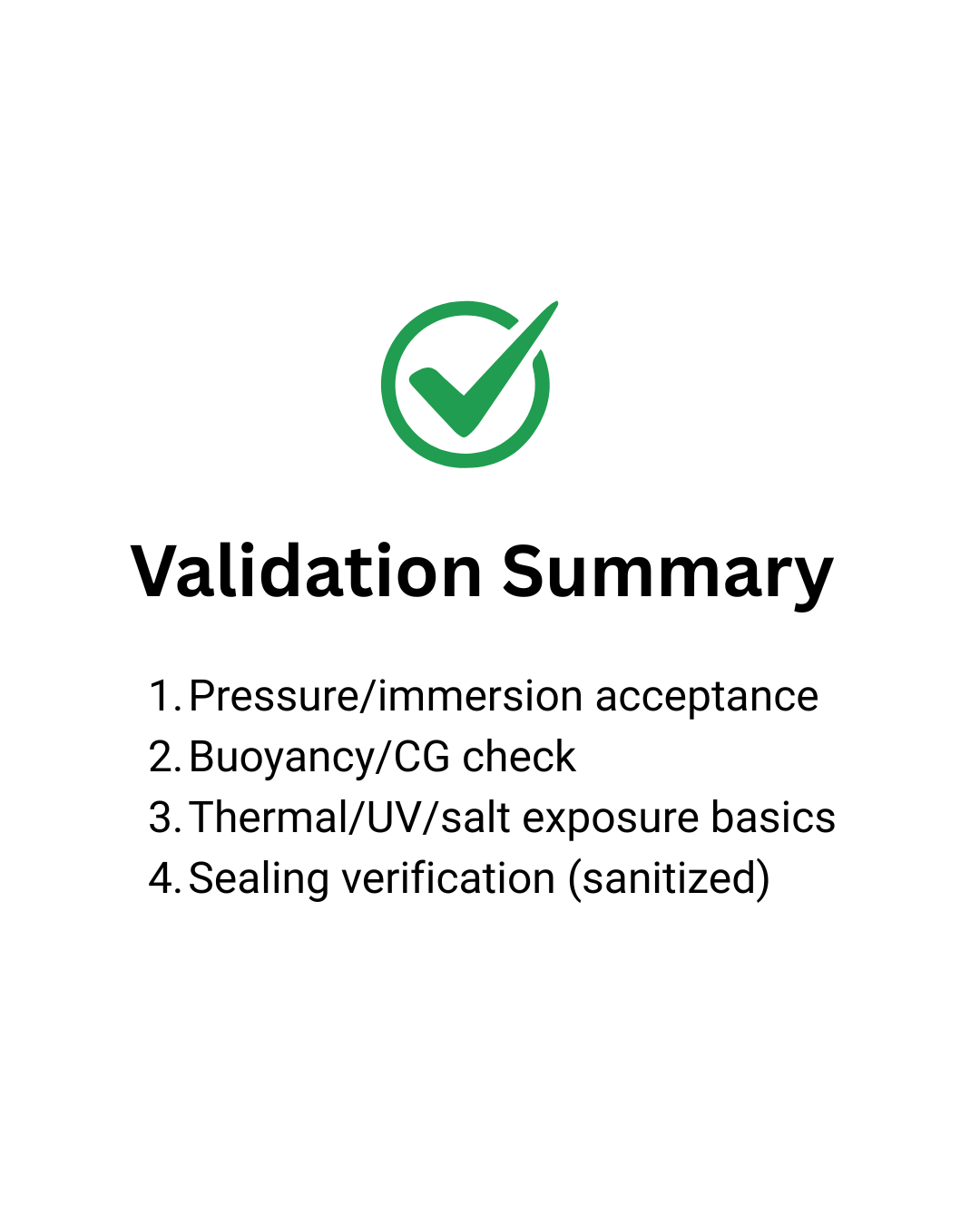Underwater Acoustic Tag (NDA)
2-minute full case study (the scroll-through / deep dive)
Context & users
Field teams needed a compact underwater recorder that stays oriented, resists pressure, and can be attached and retrieved reliably without specialist tools. Goal: a repeatable, low-profile package that extends recording time and simplifies deployment.
Requirements / constraints
Thin form factor; smooth exterior to minimize snags/drag
Predictable orientation (CG CB), tolerant of minor payload variation
* no * Ingress resistance via a serviceable seal (no permanent potting for routine maintenance)
Mounting that works on varied substrates/harnesses; protected cable/connector strain-relief
Materials and processes suitable for short-run molding and fast iteration
Solution architecture (sanitized)
Multicomponent molded polymer housing (main shell + cover + gasket groove)
Serviceable seal: O-ring/gasket stack with compression stops and generous lead-ins
Internal ballast pockets to trim CG; modular board standoffs to control stack height
External mounting flats/slots compatible with straps or brackets; recessed fasteners
Routed cable path with strain-relief features and drip loop
Engineering highlights
CG/ballast tuning: Spreadsheet + benchtop tank trials to set a ballast map and trim angle; targeted neutral/slightly negative buoyancy for predictable handling
Molding for repeatability: Draft, radii, and gate locations chosen to reduce warp; indexed features for assembly alignment; documented de-mold steps
Seal design: Groove dimensions set for target compression; corner radii to avoid pinch; tactile check for full seating; light-grease spec to reduce stick-slip
PCB/mech integration: Board keep-outs respected; standoffs + washers manage compression; cable gland spec’d for pull-out and bend radius
Build & validation testing
Buoyancy & balance: Tank tests (fresh and salt) to verify orientation, trim angle, and stability during gentle tow
Pressure checks: Pressure-pot/column to target depth equivalent; inspected for leak paths and post-test mass gain
Hydrodynamics: Simple tow test to gauge drag and side-slip; adjusted leading edges and mounting position
Attachment trials: Strap/adhesive/standoff options compared for install time, shear/peel behavior, and serviceability
Results (sanitized)
Stability: Consistent orientation in tank tests; reduced roll/rocking versus prior layout
Endurance: Packaging changes enabled longer recording time (thermal path + battery-volume efficiency)
Repeatability: Molding/assembly steps documented; fast, consistent closes with even seal compression
Readiness: Passed internal buoyancy and pressure checks to program targets; improved handling via protected strain-relief
What I’d improve next
Formalize IP-style ingress tests and UV/salt-fog exposure; add debris guards at cable entry
Tool-less latch option to speed field swaps; standardize hardware to two driver types
Expand environmental matrix (temperature, long-duration soak, repeated deploy/retrieval cycles)
Gallery
-

Hardware imagery intentionally limited under NDA; visuals are sanitized or representative.
-

Pressure/immersion check against ingress targets (sanitized).
-

Hydrodynamics fixture used to evaluate stability and drag trends.
-

Representative hydrodynamics considerations (conceptual).
-

Validation activities (sanitized overview).
-
-
-
-